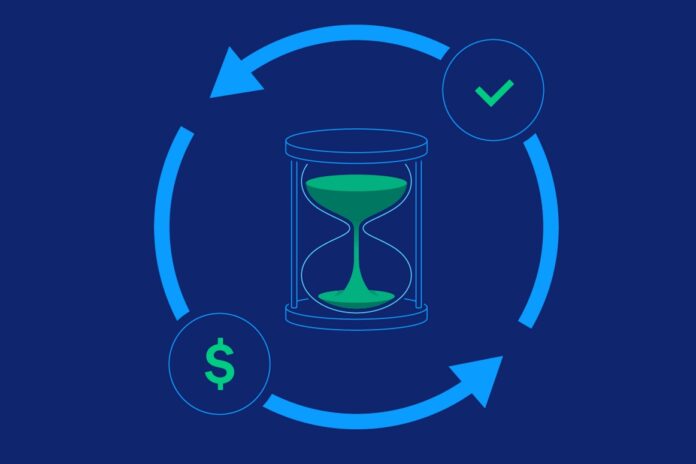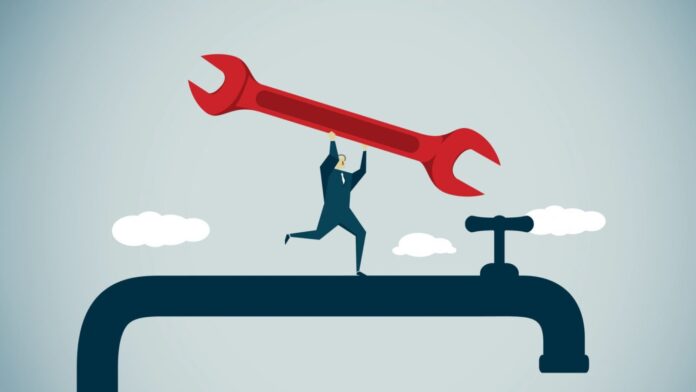Have you ever felt like your business is stuck in an endless loop of debt? No matter how hard you try to grow revenue and profits, you can’t seem to get ahead because outgoing payments consistently exceed incoming funds. This cash flow crunch makes it nearly impossible to invest, expand, and reach your true potential. But what if you could implement simple, practical strategies to flip the script and use intelligent cash flow management to steadily pay down debt? By optimizing your inflows and outflows, you can strengthen your financial position despite economic uncertainties.
This article provides 20 proactive tips to help you boost cash reserves, reduce debt, and achieve the financial freedom your business deserves.

Understanding Business Debt and the Path to Relief
Getting a handle on business debt is a key step before implementing cash flow management tactics. Debt fuels growth for many companies, but excessive debt service can become burdensome. Business debt includes loans, lines of credit, bonds, and other liabilities that redirect cash from operations to lenders. The crushing weight of debt obligations can feel overwhelming for many businesses, especially smaller companies or startups. Achieving debt relief requires more than making payments.
Businesses must strategically reduce obligations over time through intelligent debt management. States across the country offer a variety of localized debt relief and reduction programs catered to struggling businesses. If you run a business in California, customized debt relief can help your business regain its financial footing. California debt relief programs provide customized plans to tackle debt and restore financial flexibility. Prioritizing debt reduction ensures stability, enabling sustainable growth. With a plan to attack debt and optimize cash flow, businesses can relieve the pressure of liabilities and invest in their future.
Boosting Cash Inflows
Understanding the critical relationship between efficient cash flow management and enhanced financial performance is our starting point. Let’s explore proven strategies that not only balance liquidity with profitability but also ensure the longevity of your business.

Tip 1: Accelerate Receivables
Slow or late customer payments are one of the biggest drags on cash flow. Implement strategies to speed up your collections process for faster incoming funds. Send invoices immediately upon delivery of products/services, offer discounts for early payment, accept credit cards, and follow up on past-due accounts. Every day you reduce receivables puts money in the bank.
Tip 2: Renegotiate Terms with Customers
If customers pay too slowly, negotiate revised terms that require faster payment. Offer an incentive like a slight price discount in return for payment within 15 or 30 days rather than 60. Just be sure new terms don’t undermine customer relationships.
Tip 3: Sell Excess Inventory or Equipment
Look for unused or slow-moving inventory and old equipment that can be sold to bring in cash quickly. Online auction sites make liquidating excess assets easier than ever.
Tip 4: Explore New Income Streams
Consider branching out into complementary products or services that could generate new revenue streams and increase cash inflows. Even a minor add-on can make a difference.

Controlling Cash Outflows
With the foundational knowledge that proper cash flow management is essential for the persistence of any business, the next step is practical application. How do we move from theory to action? The following section delves into implementing these cash flow management techniques, ensuring your business not only survives but thrives.
Tip 5: Optimize Inventory Management
Carrying excess inventory ties up cash unnecessarily. Use lean methods like Just-in-Time ordering to ensure you have just enough stock on hand. Strike a balance between inventory costs and lost sales.
Tip 6: Delay Payables Tactfully
Paying vendors early means parting with cash sooner than necessary. Politely push for later payment terms to hold onto funds longer. Offer suppliers incentives like higher future volume in return.
Tip 7: Negotiate Discounts with Suppliers
Big suppliers may offer discounts or rebates for prompt payment, bulk purchases, frequent ordering, etc. Ask what deals may be available to manage cash outflows.
Tip 8: Lower Operating Expenses
Review all expenses to identify areas for reduction like overstaffing, excess utilities usage, or underperforming marketing channels. Cutting unneeded costs improves cash flow.
Tip 9: Freeze New Hiring & Investments
When cash flow tightens, pause hiring for non-essential roles and postpone major investments in new equipment, software, facilities, etc. Focus spending solely on critical needs.
Tip 10: Restructure/Consolidate Debt
Work with lenders to refinance debt at lower interest rates or extend repayment terms to reduce monthly payments and improve cash flow. Consider consolidating multiple loans.
| Tip | Strategy | Benefits |
| Optimize Inventory Management | Use Just-in-Time ordering, track stock levels | Reduces excess inventory costs |
| Delay Payables Tactfully | Negotiate later payment terms with suppliers | Preserves capital longer |
| Negotiate Discounts with Suppliers | Ask about discounts for prompt/bulk payments | Lowers purchase costs |
| Lower Operating Expenses | Cut overstaffing, utilities, marketing costs | Improves net cash flow |
| Freeze New Hiring & Investments | Pause non-critical hiring and investments | Conserves cash in downturns |
| Restructure/Consolidate Debt | Refinance at lower rates, extend terms | Reduces monthly payments |
Optimizing Working Capital
While adopting techniques to improve cash inflows and control outflows can significantly enhance cash flow, awareness of potential pitfalls is crucial for sustained success. The landscape of business finance is fraught with challenges that can undermine your efforts if not navigated wisely.

Tip 11: Offer Customer Financing
Providing payment plans or financing options can increase sales by removing upfront cost barriers for customers. Just ensure adequate credit safeguards.
Tip 12: Pursue Early Payment Discounts
Take discounts from suppliers for paying invoices ahead of schedule to reduce costs. The savings often exceeds any lost interest. Discounts improve margins.
Tip 13: Lengthen Payment Terms with Suppliers
Renegotiate payment schedules with flexible suppliers to shift from 30 days to 60 or 90-day terms. This preserves capital for other uses before paying.
Tip 14: Use Inventory Management Systems
Automated inventory management software boosts accuracy in tracking stock levels and reduces the risk of overbuying. Better data minimizes cash tied up in inventory.
Tip 15: Implement Lean Processes
Lean manufacturing techniques like Kanban streamline operations and reduce waste. Smoother workflows and lower costs mean better cash flow.
Tip 16: Outsource Non-Core Functions
Outsourcing peripheral business functions like HR, accounting, etc. reduces overhead costs and converts fixed costs into variable costs based on usage.

Leveraging Financial Expertise
As we’ve seen, even well-intentioned cash flow strategies can face obstacles. But what about the specific concerns you, as a business owner or financial manager, might have? Let’s address some frequently asked questions that arise when managing cash flow to reduce business debt.
Tip 17: Consult a Cash Flow Specialist
Turn to financial experts like cash flow consultants who can review your particular situation and provide tailored strategies to strengthen cash flow management.
Tip 18: Use Accounting Software
Cloud accounting systems improve cash flow visibility by consolidating financial data in one place. The insights help owners make better cash flow decisions.
Tip 19: Build a Cash Flow Forecasting Model
Detailed cash flow projections help anticipate future shortfalls and surpluses. Using tools like spreadsheet software can create an invaluable forecasting model.
Tip 20: Hire a Part-Time CFO
Part-time CFO services provide experienced financial leadership and strategic advice tailored to your business. Their expertise can optimize cash flow management.
| Tip | Strategy | Benefits |
| Consult a Cash Flow Specialist | Work with financial experts like consultants | Get tailored strategies for your situation |
| Use Accounting Software | Cloud-based systems consolidate data | Improves visibility for decisions |
| Build a Cash Flow Forecasting Model | Detailed projections using spreadsheets | Anticipates future shortfalls/surpluses |
| Hire a Part-time CFO | Experienced financial leadership and advice | Optimizes cash flow management |
Implementing Cash Flow Management
Having explored actionable tips, potential implementation strategies, and addressed common queries, we’re equipped with a comprehensive understanding of managing cash flow to effectively reduce business debt. Let’s recap the key takeaways and reflect on how embracing these strategies can transform your business’s financial health.
With careful execution, these tactics can optimize cash inflows, reduce outflows, and improve working capital management on the path to substantially lowering your business debt.

Avoiding Common Cash Flow Pitfalls
While effective cash flow management reduces business debt, it is also crucial to avoid common pitfalls that can undermine these efforts:
Inaccurate sales forecasts – Overly optimistic sales projections lead to excessive inventory purchases and higher costs. Conservatively estimate demand.
Inflexible budgets – Static budgets that lack contingency funds fail to accommodate unexpected expenses that arise. Build in flexibility.
Too much customer credit – Loose credit policies lead to accumulating bad debts and cash flow problems. Enforce prudent credit limits.
Poor expense tracking – Without detailed accounting of costs, excess expenses go unnoticed. Closely monitor spending.
Limited financial controls – Loosely enforced policies, processes, and approval controls create inconsistencies. Institute robust controls.
Not monitoring cash flow frequently – Sporadic or minimal monitoring causes managers to miss emerging problems before they escalate. Review regularly.
Disregarding external factors – Failure to account for market conditions or economic trends when forecasting leads to avoidable errors. Assess external forces.
Anticipating risks allows businesses to proactively sidestep cash flow challenges. Forward-looking scenario planning is essential.
Frequently Asked Questions
What is the most effective tip for managing cash flow to reduce business debt?
The most effective tip is enhancing receivables by speeding up the collection process. This includes invoicing promptly and offering discounts for early payments. Quickening the cash conversion cycle improves liquidity, allowing businesses to pay down debt faster.
How can delaying disbursements help in managing cash flow?
Delaying disbursements without damaging supplier relationships involves negotiating extended payment terms. This strategy helps maintain cash in the business longer, providing flexibility and improving short-term liquidity for more effective debt repayment management.
Is debt restructuring a viable option for reducing business debt?
Yes, debt restructuring can be a viable strategy. It involves renegotiating the terms of existing debts to reduce the interest rate or extend the payment period. This can lower monthly payments and free up cash flow, making it easier to manage and reduce overall debt.
How does inventory management affect cash flow and debt reduction?
Effective inventory management, such as implementing a Just-in-Time (JIT) system, minimizes holding costs and frees up cash that can be used to reduce debt. It ensures that capital is not tied up in excess inventory, improving cash flow efficiency.

Can financial management software significantly improve cash flow management?
Yes, financial management software provides better visibility and control over cash flow by automating invoicing, tracking expenses, and forecasting future cash flow. This comprehensive view aids in making informed decisions to optimize cash flow and reduce debt.
How often should I review my cash flow forecast?
It’s advisable to review your cash flow forecast at least monthly. Regular reviews help identify potential shortfalls or surpluses early, allowing for adjustments to spending, investment, or debt repayment strategies to maintain healthy cash flow and reduce debt.
What role does cutting unnecessary expenses play in cash flow management?
Cutting unnecessary expenses is crucial for freeing up cash that can be better utilized to reduce debt. It involves critically assessing all business expenses and eliminating those that do not contribute to the company’s growth or financial health, thereby improving cash flow.
How can increasing revenue streams contribute to debt reduction?
Increasing revenue streams introduces additional cash into the business, which can be directly applied to debt reduction. This might involve diversifying product offerings, entering new markets, or leveraging digital sales channels to broaden income sources and improve cash flow.
What common pitfalls should I avoid in cash flow management?
Common pitfalls include failing to adapt to changing business environments, confusing cash flow with accounting profit, and neglecting the terminal value in cash flow projections. Avoiding these mistakes ensures more accurate financial planning and effective management of debt.
How important is maintaining a cash reserve for managing cash flow and reducing debt?
Maintaining a cash reserve is essential for financial stability. It acts as a buffer against unexpected expenses or cash flow shortfalls, reducing the need to take on additional debt and providing funds that can be used for debt reduction during financially stable periods.
How can offering early payment discounts impact my business’s cash flow?
Offering early payment discounts incentivizes customers to pay their invoices sooner, thus accelerating cash inflows. This strategy improves your business’s liquidity, allowing you to manage and reduce debt more effectively by having immediate cash available for repayment or other financial obligations.

What is the impact of negotiating extended payment terms with suppliers on my business’s financial health?
Negotiating extended payment terms with suppliers can significantly improve your business’s financial health by preserving cash flow. By delaying outflows without compromising supplier relationships, you extend your operational budget, enhancing your ability to manage debts and invest in growth opportunities responsibly.
How can a Just-in-Time (JIT) inventory system help in reducing business debt?
A JIT inventory system reduces the money tied up in unsold stock, thereby improving cash flow. By receiving goods only as they are needed, you minimize inventory costs and increase cash availability for debt reduction, aligning your operational expenditures more closely with revenue generation.
Are there any risks associated with using financial management software for cash flow management?
While financial management software can offer significant advantages for cash flow management, potential risks include overreliance on automated insights without understanding the underlying financial principles. Additionally, data security concerns should be managed with appropriate cybersecurity measures to protect your business’s financial information.
How can I ensure that my business adapts to changing environments to maintain healthy cash flow?
Ensuring your business adapts to changing environments requires continuous market analysis, flexible business strategies, and regular cash flow reviews. Staying informed about industry trends and adjusting your business model and financial planning accordingly can help mitigate risks to cash flow and facilitate more effective debt management.





![Calgary’s Hottest Neighborhoods for Luxury Homebuyers [2024]](https://thewashingtonote.com/wp-content/uploads/2024/04/Calgary-324x160.png)



